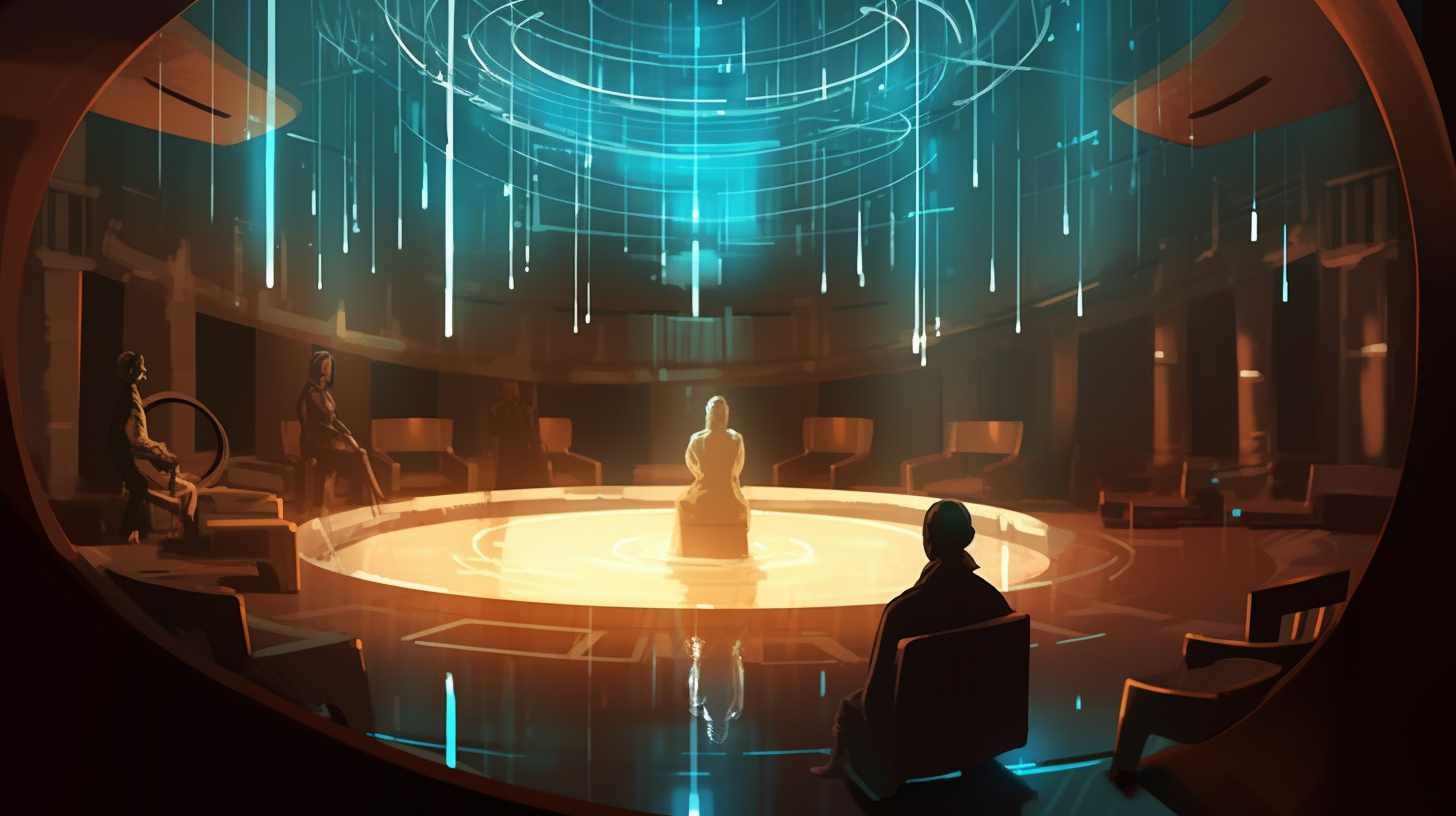How "The Demolished Man" Changed the Rules of Science Fiction
Alfred Bester's "The Demolished Man" remains a bold and visionary classic, blending telepathy, crime, and psychology in a future where privacy is gone and thought itself is subject to control.

Alfred Bester wrote like a man who could see the future without blinking. In an era when most science fiction stayed tethered to rockets and rayguns, he pushed the genre inward, exploring the mechanics of the mind.
With the publication of "The Demolished Man" in 1953, Bester delivered something electric and unsettling. This tale moved at the speed of thought and dared to ask what happens when privacy itself becomes obsolete. The novel earned the first Hugo Award for Best Novel, a recognition that marked it not only as a standout of its time but also as a benchmark for what science fiction could achieve when it looked beyond machinery and into the human soul.
Bester's vision is a murder mystery set in a society where telepathy is not just common but regulated. Detectives are no longer guessing at motives or digging for clues. They can read minds.
In such a world, planning a crime becomes an act of strategic brilliance or suicidal madness. That is the hook, but it is only the beginning. Beneath its slick plotting, "The Demolished Man" investigates ambition, control, and the fragility of identity in a future where one's inner world is no longer private.

Society of the Mind
The future imagined in "The Demolished Man" is not defined by flying cars or alien invasions. Instead, it is shaped by a quiet revolution of the psyche. In Alfred Bester's world, telepathic ability has become an institutional fact. Men and women born with this mental power—known as Espers—are graded, registered, and governed. What might have once been called a gift is now a profession subject to oversight. There are Esper guilds, corporate affiliations, and social expectations that govern how minds may be accessed or shielded.
Crime, in such a world, becomes almost impossible. How can a man lie or conceal guilt when his consciousness is open to inspection? The police do not need wiretaps. They have Class 1 Espers trained to peel back mental defenses until the truth reveals itself. This does not create utopia. Instead, it leads to a culture where psychic intrusion replaces suspicion, and privacy is all but extinct.

Bester constructs this framework with a craftsman's precision. The Esper hierarchy is not mere window dressing. It is a system of control. Those with higher classification enjoy advantages. Those without live under the threat of unwanted exposure. The result is a society governed by laws and psychic privilege.
This vision channels the anxieties of the 1950s with eerie clarity. Bester portrays a future where corporate magnates and mental elites impose their will, where the self is no longer sacred but searchable. It is a chilling extrapolation of surveillance culture and bureaucratic dominance, made vivid through a science fiction lens.
The Human Factor
In "The Demolished Man," Alfred Bester does not merely use telepathy as a futuristic device. He uses it to dissect the soul. Every interaction and confrontation is loaded with tension because thoughts are always in play. The characters in this world are not only seen by others. They are known. That knowledge creates friction. It reveals weakness. And in some cases, it unravels sanity.

Bester's characters are more than figures on a speculative stage. They are shaped by personal wounds, buried ambitions, and unresolved guilt. What elevates them beyond standard genre archetypes is the depth of their inner conflicts. These are people driven by forces they do not fully understand. Their memories are not passive archives. They are arenas of conflict. What one man tries to forget, another can uncover. What a man hides from himself, an Esper might exploit.
Throughout the novel, Bester incorporates Freudian motifs with deliberate intensity. Childhood experiences cast long shadows. Repressed emotions swell beneath the surface. The narrative does not require a degree in psychoanalysis, but its emotional weight is rooted in those psychological undercurrents. There are patterns of parental authority, dream symbolism, and questions of selfhood that complicate every decision the characters make.
The result is a story not just about crime and justice, but about vulnerability and mental exposure. In a world without mental barriers, emotional collapse is not far behind. Bester showed that science fiction could be more than predictive. It could be diagnostic. And in "The Demolished Man," it probes deep.
Form and Function
Alfred Bester did not just write a story in "The Demolished Man." He reinvented how one could tell a story. While many of his contemporaries relied on conventional narration, Bester shaped his prose to match the turbulence of his ideas. Nowhere is this clearer than in his depiction of telepathic communication. When Espers speak mind to mind, the text itself fractures. Sentences overlap. Syntax bends. Letters crowd the page like intrusive thoughts. It is not meant to be smooth. It is meant to overwhelm.

This technique was radical. Rather than describing telepathy in clinical terms, Bester makes it visceral. The reader experiences the sensation of mental entanglement. It is not easy, and it is not clean. It is brilliant. The novel becomes not just a story but a performance. Bester forces the form to reflect the content, creating one of science fiction's most immersive portrayals of psychic exchange.
His structural choices were equally bold. The crime at the center of the plot occurs early. The reader knows the culprit. The mystery is not what happened, but how and whether justice will be done. This flips the script. Suspense builds not from discovery but from pursuit. The novel becomes a battle of perception and resolve rather than deduction.
That said, the pacing is uneven. The opening crackles with momentum. The middle drifts into more introspective terrain. The conclusion brings the pressure back with force. Yet the total effect is enduring. Bester's innovations paved the way for authors like Philip K. Dick and Samuel R. Delany. He demonstrated that science fiction could be both a vessel for big ideas and a laboratory for language. In "The Demolished Man," the story and the style are inseparable.
Echoes in the Ether
More than seventy years after its publication, "The Demolished Man" still reverberates. It helped redefine science fiction as a literature of interiority as well as invention. Alfred Bester did not just imagine new technologies. He imagined new ways of thinking about the human condition under pressure.

Many of the ideas he introduced have become standard. The concept of psychic policing is now familiar, seen in everything from "Minority Report" to "Babylon 5." His depiction of mental hierarchy, institutional power, and personal vulnerability continues to inspire writers grappling with the boundaries between freedom and control. His Esper Guilds anticipate many of the anxieties that now shape our conversations about data, privacy, and surveillance.
The novel is not without age. Certain psychological theories now seem stiff. Some character roles reflect the conventions of the era. But these aspects do little to diminish the work's force. What matters is its imagination, its risk-taking, and its refusal to stay within the genre's early limits.
For readers interested in the roots of science fiction's literary evolution, "The Demolished Man" remains essential. It is a novel that dared to bend both rules and forms. It asked what kind of future we might inhabit if even our thoughts could be policed. And it delivered that vision with clarity and conviction. In revisiting it, we are not looking back in nostalgia. We are remembering a time when science fiction moved forward with every word.

